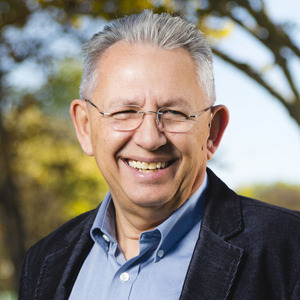Pastors and church leaders have experienced the frustration of seeing someone make a personal decision for Christ and then quickly disconnect from church. Why is it that people connect with Christ but not a local church? How can local churches be more effective in keeping new believers?
A number of years ago, Dr. Flavil Yeakley conducted a study of this very problem for his Ph.D. degree. His findings are still instructive. The following is a profile of a new convert who stays in a local church.
First, a new convert who stays has been exposed to a variety of evangelistic influences throughout the church. Research gathered from several sources concludes that growing churches average nine ways to share the gospel of salvation with people. Plateaued churches average seven ways, while declining churches average only three ways. Further, the more times a nonbeliever is exposed to the gospel the greater the chance they will come to faith in Christ. In most cases it takes at least six hearings of the gospel before a person makes a commitment to Christ. In contrast people who make a decision for Christ after only, say, two hearings of the gospel, usually drop out of a church within six months of attendance. The bottom line is that the more ways a local church has to engage nonbelievers with the gospel, the better.
Second, a new convert who stays views his or her conversion as being non-manipulative. The research of Flavil Yeakley discovered that of people who believed in Christ, joined a church, and were still active six months following their conversion, 71% viewed their conversion as non-manipulative. On the other hand, people who believed in Christ, joined a church, and then dropped out of the church within six months, 85% felt their conversion was manipulated. The bottom line is the more new converts view the person who brings them to Christ as a friend, the better. If new converts see the person who leads them to Christ as a salesman, they are less likely to stay in a church.
Third, a new convert who stays has developed friendships with people in the church prior to his or her conversion. While there is no exact number to aim for, research shows that the more friends a person develops in a church before his or her conversion, the more likely they are to remain in the church after conversion. The bottom line is the more a church can encourage worshipers to develop friends outside of the church, the better.
Fourth, a new convert who stays has established friendships in a church following conversion. Once again, the research of Flavil Yeakley shows that it is crucial for new converts to make friends in a church after their faith experience. In his study converts who remained active in a church longer than six months developed an average of seven friends in their church, but converts who dropped out before six months only developed two friends. The bottom line is that a church that focuses on helping new converts make friends within the church will be more likely to grow.
Fifth, a new convert who stays has recently experienced a high degree of change in his or her life. It has long been known that events and circumstances in the life of an individual often provide a open door for the gospel. However, it is also a fact that people who are winnable today may not be tomorrow. The bottom line is a church that focuses its evangelistic outreach on life change issues will be more effective than those that do not.
Sixth, a new convert who stays has been integrated into a group and has found a meaningful role in the church. There are three keys to keep new converts in a church: (1) help them make friends, (2) help them fine a place to belong, and (3) help them find a task to accomplish. The bottom line is that a church needs to get new converts involved quickly, usually within six months, or risk seeing them drop out.
Seventh, a new convert who stays fits culturally in the church. While it is not popular to discuss, the truth is the more a new convert matches the general age of a congregation, as well as the socioeconomic and educational makeup, the more likely it is he or she will stay in a church. The bottom line is that the more a church matches the people in its local community, the more new converts are likely to remain in the church.
 Biola University
Biola University

.jpg)

.jpg)